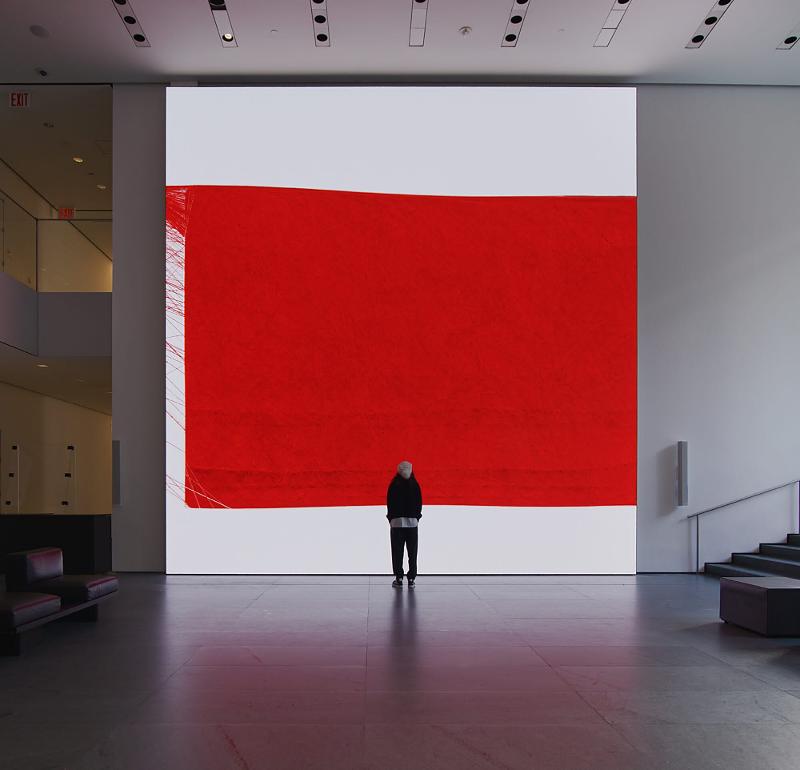The Museum of Modern Art (MoMA) has made history with its acquisition of Refik Anadol's Unsupervised - Machine Hallucinations - MoMA. This groundbreaking digital installation, which has captivated audiences for over 50 weeks, is not only a mesmerizing work of art but also the first tokenized artwork to join MoMA's prestigious permanent collection. In this article, we delve into the significance of this acquisition and the growing recognition of AI art in the traditional art scene.
The Intersection of AI Art and Traditional Art
Explore the fascinating blend of AI art and traditional art in the acquisition of Unsupervised - Machine Hallucinations - MoMA.
Unsupervised - Machine Hallucinations - MoMA represents a groundbreaking intersection of AI art and traditional art. This digital installation pushes the boundaries of artistic expression by utilizing algorithms to interpret MoMA's digitized collection and generate mesmerizing visuals. By embracing this innovative form of art, MoMA showcases its commitment to embracing new technologies and expanding the definition of what constitutes art.
With Unsupervised - Machine Hallucinations - MoMA, the museum recognizes the artistic value of AI-generated works and positions itself at the forefront of the evolving art landscape. This acquisition sparks conversations about the role of technology in art creation and challenges traditional notions of artistic authorship. As AI art continues to gain recognition, it opens up new possibilities for artists and art enthusiasts alike.
The Significance of Tokenized Art in Museums
Discover the significance of tokenized art as MoMA embraces the inclusion of Refik Anadol's Unsupervised - Machine Hallucinations - MoMA in its permanent collection.
The inclusion of Unsupervised - Machine Hallucinations - MoMA as the first tokenized artwork in MoMA's permanent collection marks a significant shift in the art world. Tokenization allows for the ownership and transfer of digital assets through blockchain technology, providing artists with new opportunities for monetization and provenance tracking.
By acquiring tokenized art, museums like MoMA are not only embracing technological advancements but also acknowledging the growing influence of digital art in contemporary culture. This move highlights the importance of recognizing digital works as valuable artistic contributions and paves the way for further exploration and integration of blockchain-based art in museum collections.
The Impact of Unsupervised - Machine Hallucinations - MoMA
Explore the profound impact of Refik Anadol's Unsupervised - Machine Hallucinations - MoMA on museum visitors and the art community.
Unsupervised - Machine Hallucinations - MoMA has captivated museum visitors since its unveiling, leaving a lasting impression on those who experience it. The immersive nature of the installation, with its undulating waves of textured color, creates a mesmerizing and thought-provoking environment.
This digital artwork challenges viewers to reconsider their perception of art and invites them to engage with the possibilities of AI-generated creations. The profound impact of Unsupervised - Machine Hallucinations - MoMA extends beyond the museum walls, sparking conversations about the future of art, technology, and the ever-evolving relationship between humans and machines.
Expanding the Boundaries of Artistic Expression
Discover how Unsupervised - Machine Hallucinations - MoMA pushes the boundaries of artistic expression and challenges traditional artistic norms.
Unsupervised - Machine Hallucinations - MoMA represents a departure from traditional artistic mediums and techniques. By harnessing the power of AI algorithms, Refik Anadol pushes the boundaries of what is possible in the realm of artistic expression.
This digital installation invites viewers to contemplate the role of technology in shaping our understanding of art and challenges the notion of human creativity as the sole source of artistic brilliance. Unsupervised - Machine Hallucinations - MoMA serves as a catalyst for reimagining the possibilities of art and embracing the fusion of technology and creativity.
Conclusion
The acquisition of Refik Anadol's Unsupervised - Machine Hallucinations - MoMA as the first tokenized artwork in MoMA's permanent collection marks a significant milestone in the recognition of AI art in the traditional art scene. This groundbreaking digital installation pushes the boundaries of artistic expression and challenges traditional notions of art creation. By embracing technology and exploring the possibilities of AI-generated works, MoMA demonstrates its commitment to evolving with the ever-changing art landscape.
FQA
What is the significance of tokenized art?
Tokenized art allows for the ownership and transfer of digital assets through blockchain technology. It provides artists with new opportunities for monetization and provenance tracking, while also highlighting the growing influence of digital art in contemporary culture.
How does Unsupervised - Machine Hallucinations - MoMA impact viewers?
Unsupervised - Machine Hallucinations - MoMA captivates viewers with its immersive and mesmerizing visuals. It challenges their perception of art and invites them to contemplate the role of technology in shaping artistic expression. The profound impact of this digital installation extends beyond the museum walls, sparking conversations about the future of art and the relationship between humans and machines.
What does Unsupervised - Machine Hallucinations - MoMA represent?
Unsupervised - Machine Hallucinations - MoMA represents a departure from traditional artistic mediums and techniques. By harnessing the power of AI algorithms, Refik Anadol pushes the boundaries of what is possible in the realm of artistic expression. This digital artwork serves as a catalyst for reimagining the possibilities of art and embracing the fusion of technology and creativity.

